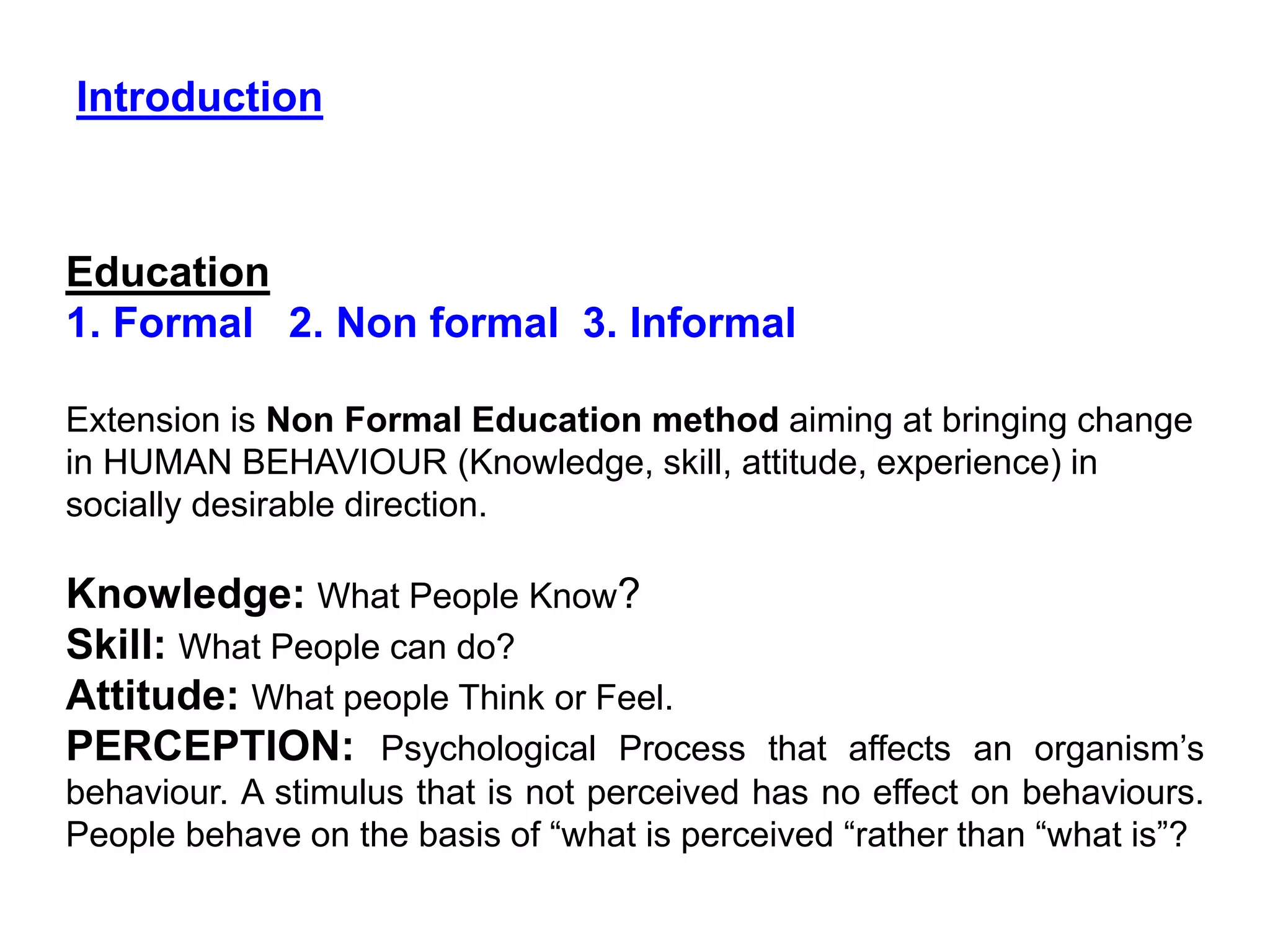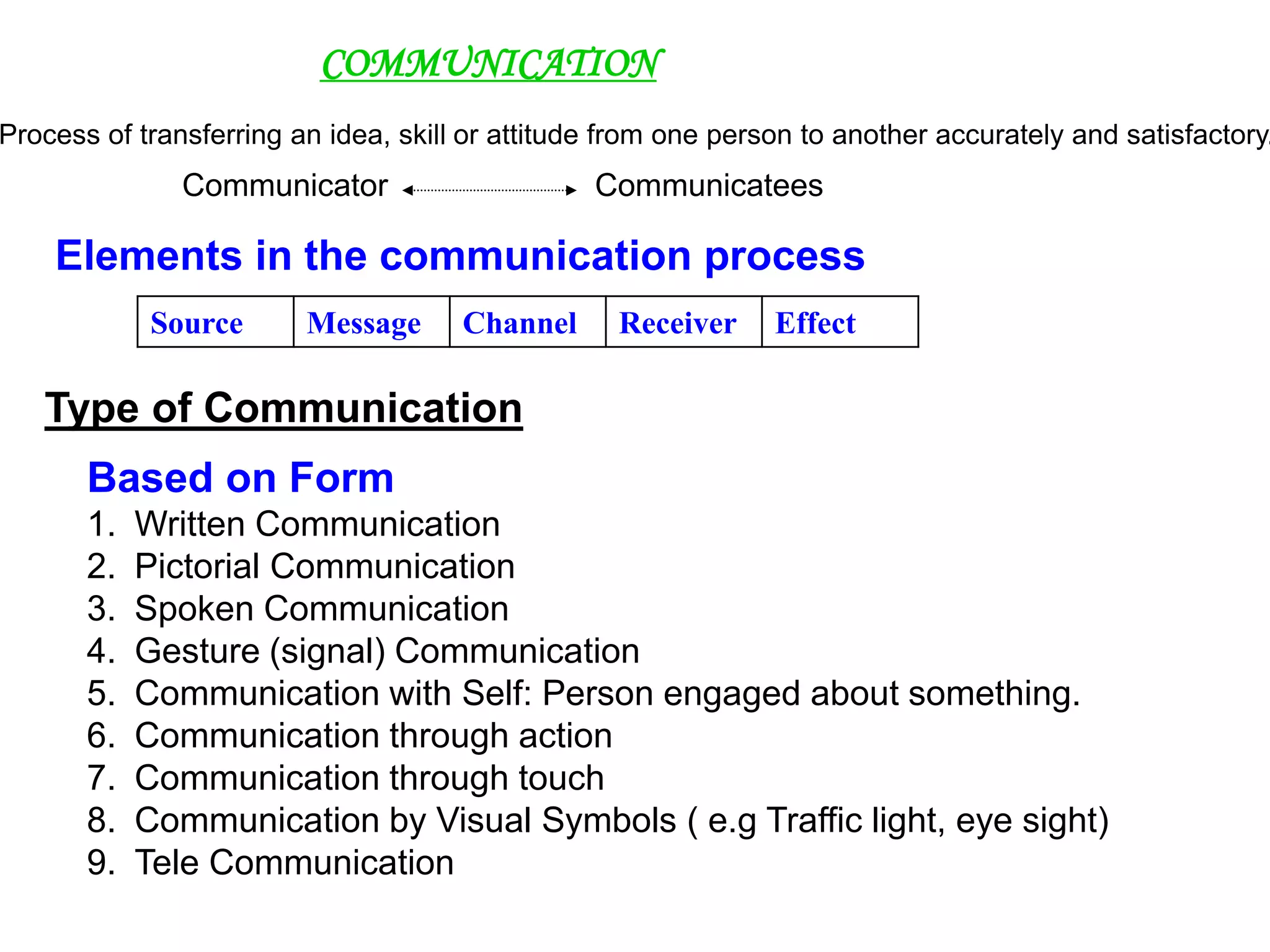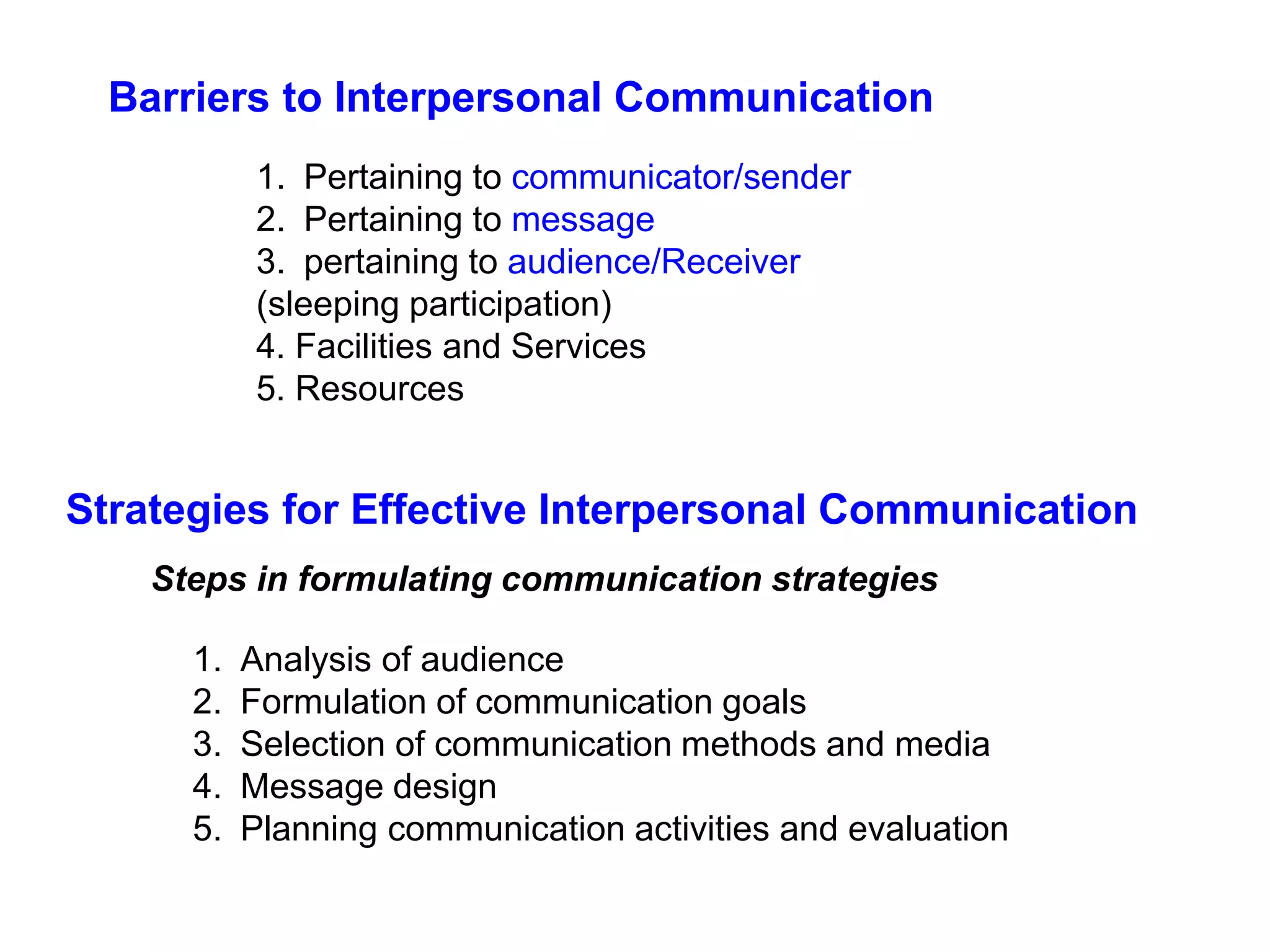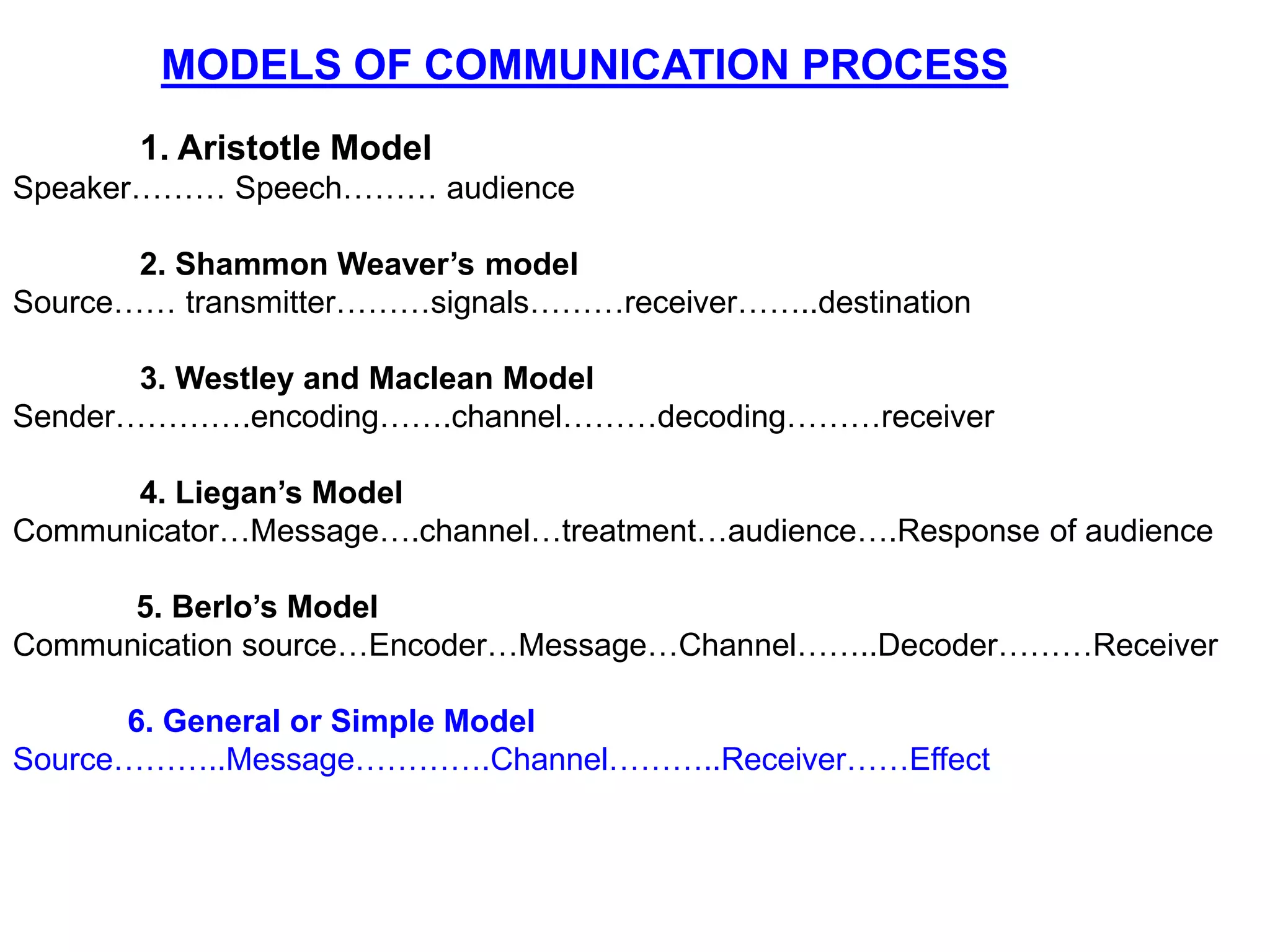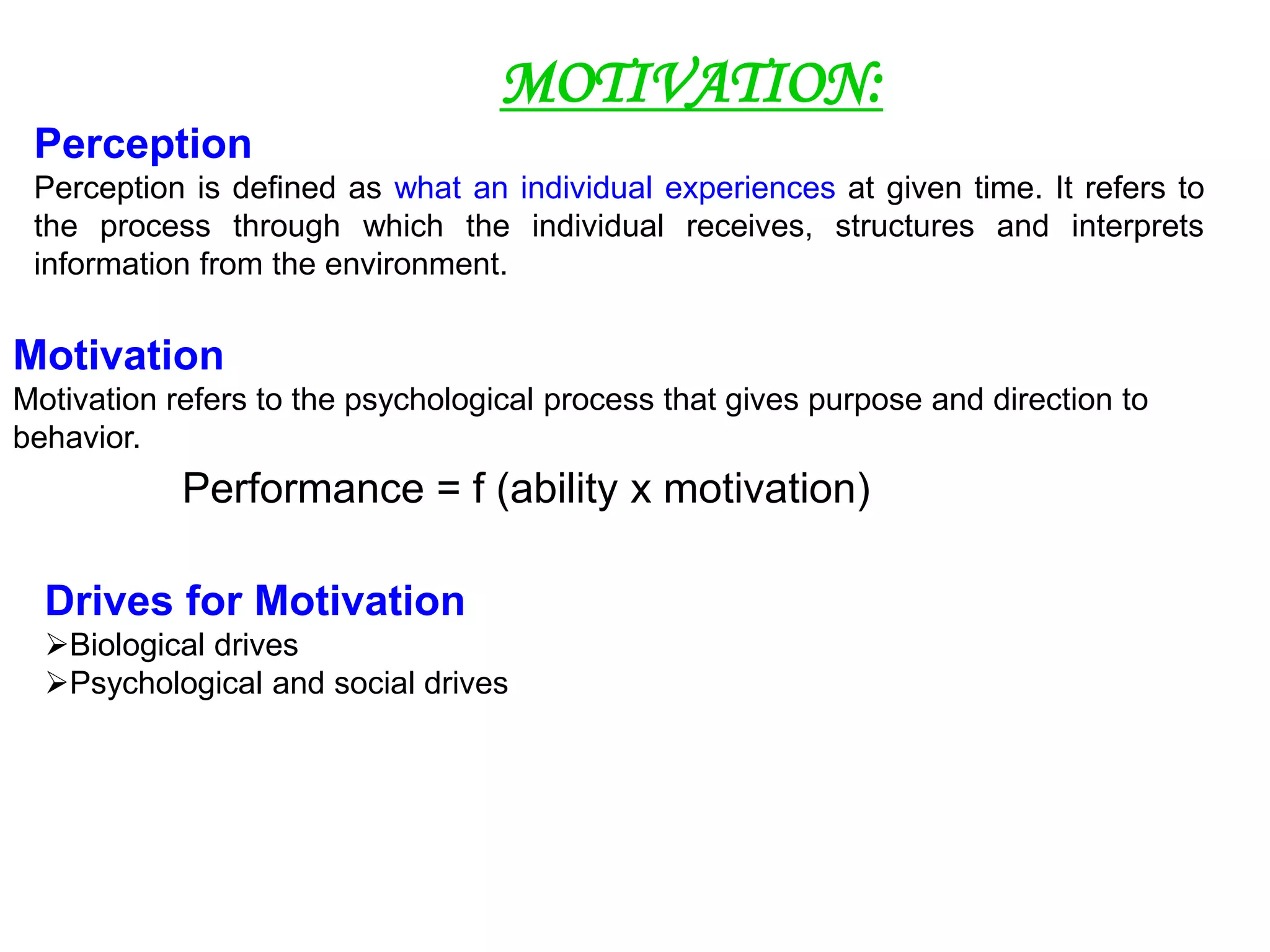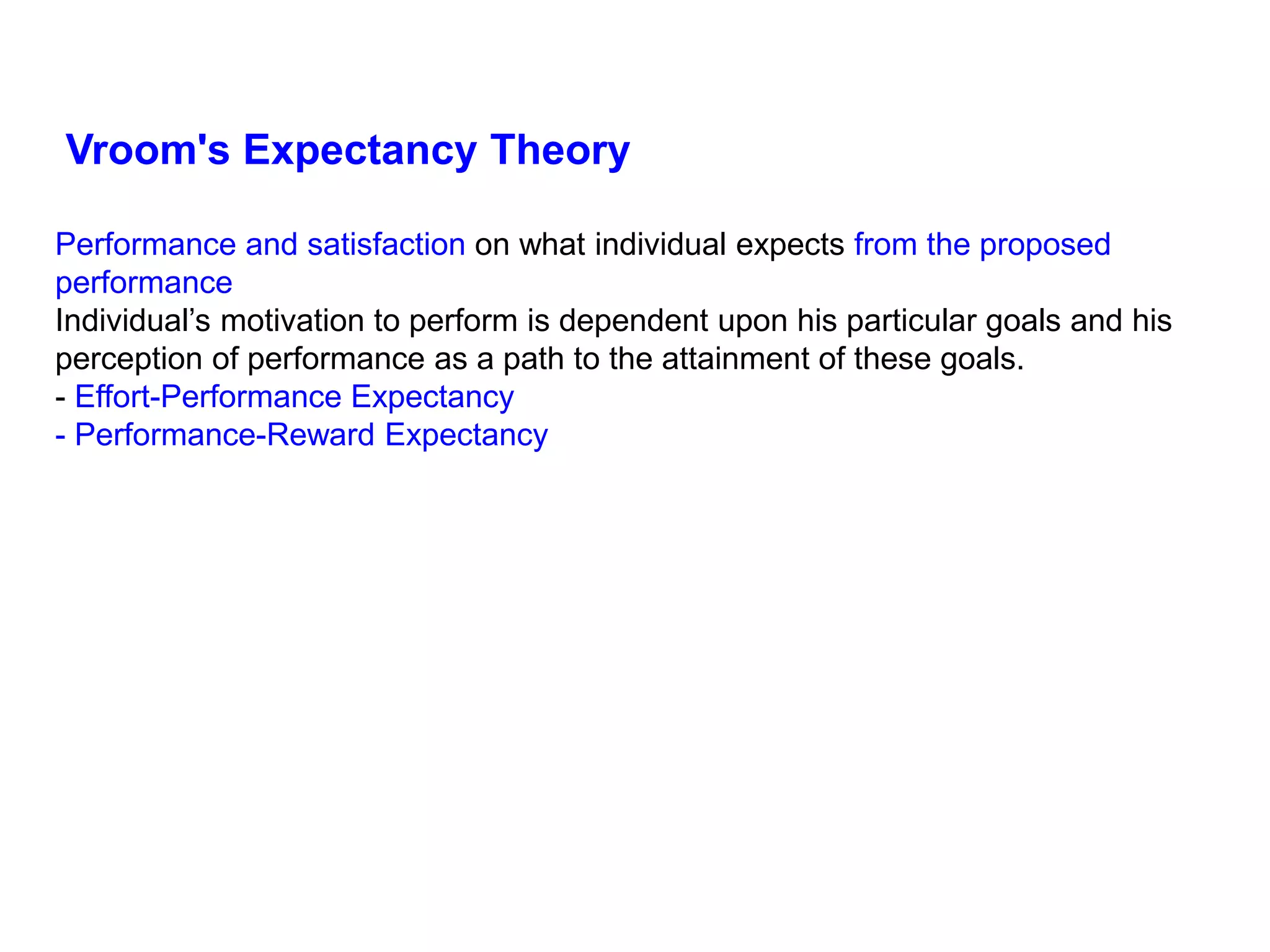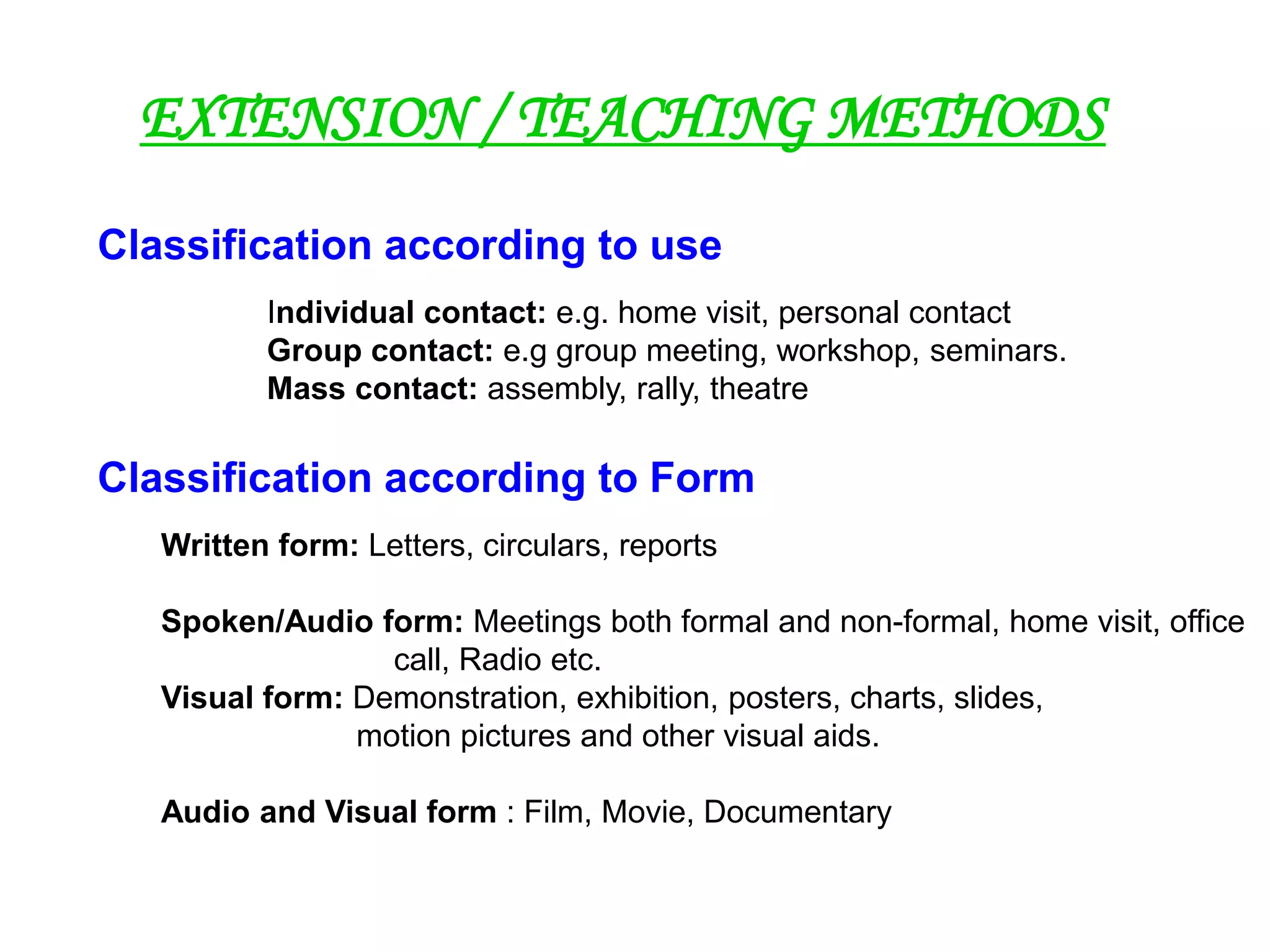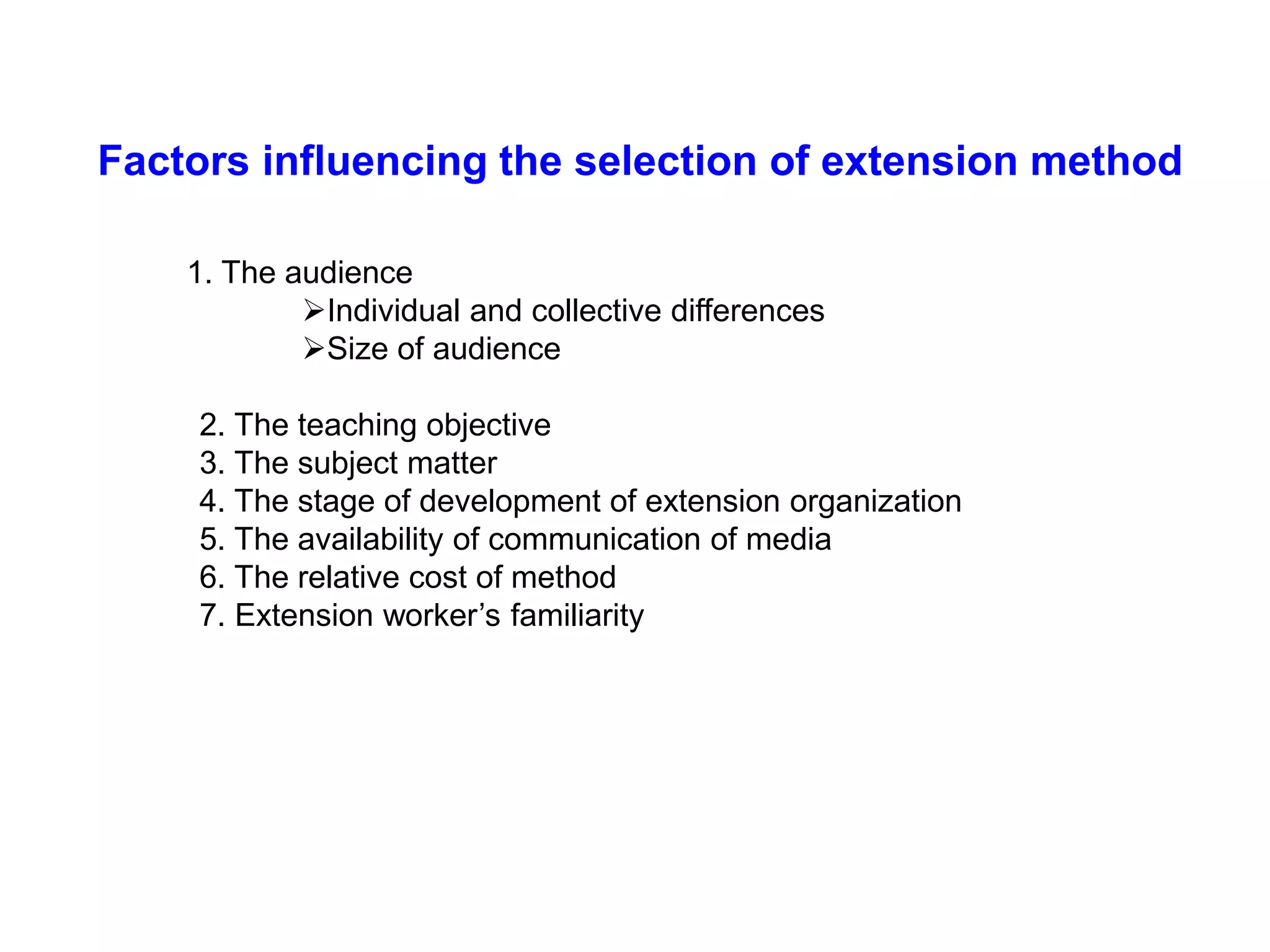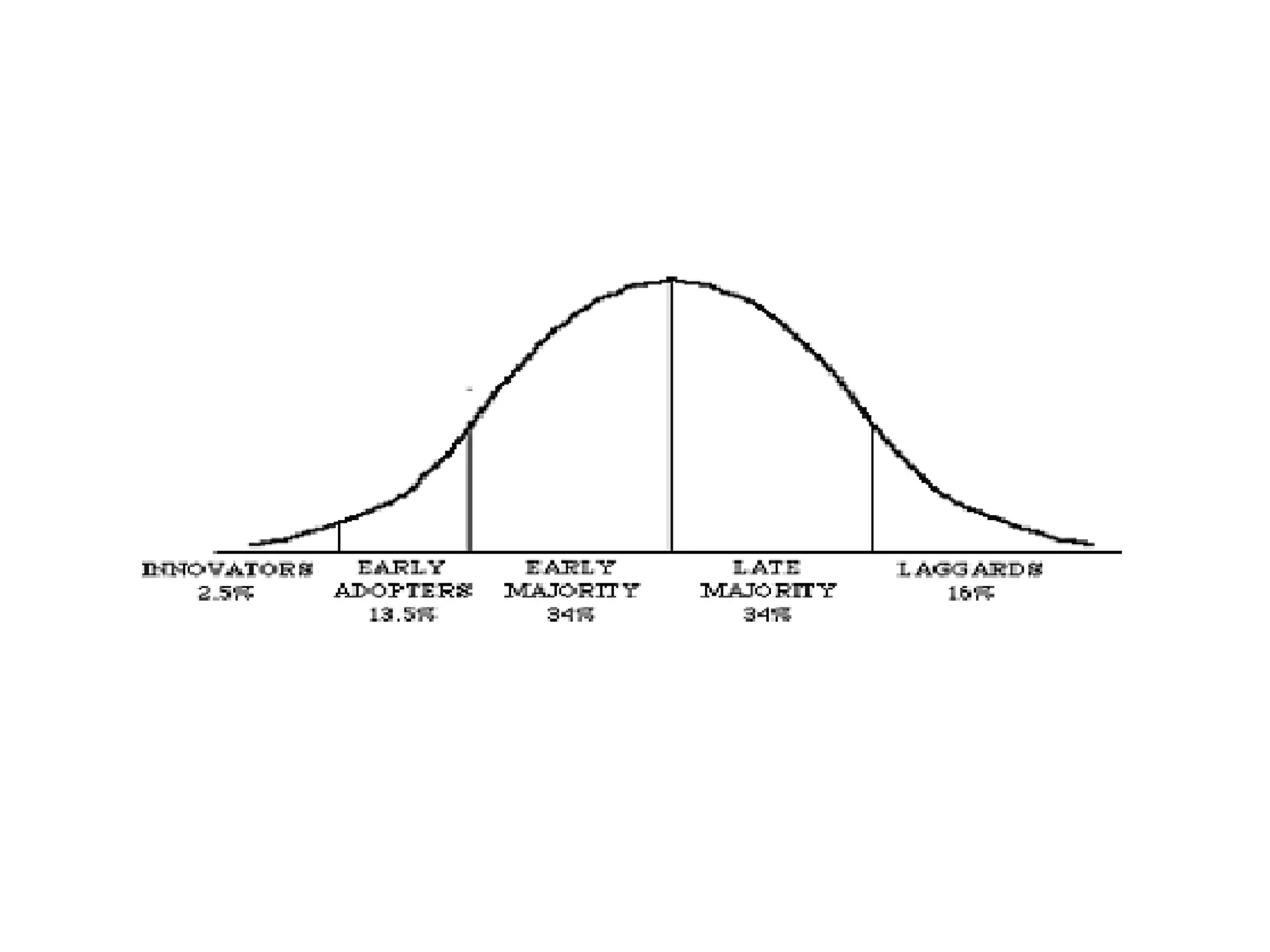This document provides an overview of forest extension. It discusses extension as a non-formal education method aimed at bringing socially desirable changes in human behavior. It also defines key concepts like knowledge, skills, attitudes, and perception. The document then discusses the origins of extension education in England in the 1860s and how the concept has evolved. It describes extension as a service, process, and job to assist rural communities in utilizing their resources. Community development is discussed as closely related to extension education. Different approaches to extension practiced in Nepal are also summarized.

